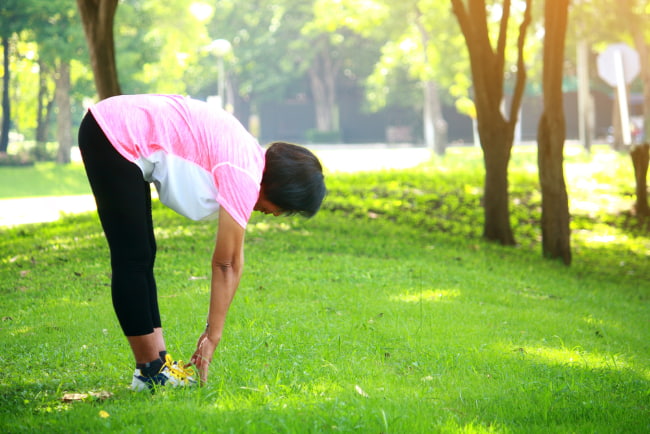As we age, walking can sometimes become more difficult for a variety of reasons. But you don’t have to stand back and accept a loss of mobility — there are steps you can take to improve it.
Seniors often experience at least some difficulty with mobility, often due to factors such as decreased balance, muscle weakness, joint problems, medical conditions and even certain medication side effects. In fact, mobility issues are the most common disability among older Americans, according to the U.S. Census.
Because of this, older adults may find themselves falling more frequently, having to walk with a decreased speed and awkward gait, and having difficulty getting in and out of a seated position or walking up or down stairs.
But while these are common problems, they are not inevitable.
Let’s take a look at what exactly “mobility” is — and six ways you can help maintain yours as you age.
Defining mobility
You may think that mobility refers to a person’s ability to move around. While that’s true, it doesn’t paint the entire picture.
Decreased mobility doesn’t just impact a person’s ability to walk or get from one spot to another. It can also negatively affect the ability to move from a seated to standing position or from lying down to seated.
That means that, for example, if an older adult were to fall, he or she might be unable to get back up due to diminished mobility.
Ways to maintain mobility
While some level of diminished mobility is inevitable as we get older, there are lifestyle habits and other steps you can take that can help limit how much. Let’s talk through six of those:
- Build up balance. Diminished balance is one reason that older adults have difficulties with walking and are at an increased risk of falls. The good news is that balance is a skill — and it can be relearned and enhanced through practice. Perform regular balance exercises to help improve balance and keep yourself on even footing. Beyond those exercises, activities like yoga, Pilates and tai chi can also help with balance.
- Get physical. Beyond performing balance exercises, it’s also important to stay physically active overall. Experts recommend getting at least 150 minutes of moderate physical activity each week — and you should include a combination of cardiovascular, balance and strength training activities. Each type of activity plays a distinct role in helping to keep your body strong and mobile.
- Get your vision checked. When’s the last time you had an appointment with an eye doctor? Vision loss is a common problem among older adults — and a common contributor to difficulties with walking. See an ophthalmologist or optometrist regularly to take a look at your eye health and gauge whether any vision changes require correction.
- Use assistive devices when needed. It is not a sign of weakness to ask for help. There are a variety of devices available to help make getting around easier, ranging from walkers and canes to items like risers for getting in and out of a chair. These mobility aids are essential when getting around becomes difficult.
- Choose the right shoes. When it comes to footwear, you want to most often choose flat or low-heeled shoes that contain treading or non-slip material on the bottom. In the past, that meant a lack of fashionable choices, but these days, there are comfortable, appropriate shoes to suit a variety of tastes. As for socks, if you’re going to be walking around the house in them, choose ones with non-skid bottoms to make falling less likely.
- Make the home mobility-friendly. Just like we suggest using mobility devices in item No. 4, we also suggest adding enhancements to the home when mobility becomes an issue. Install handrails along both sides of stairs and in the bathroom. Ensure all areas of the home, including any outdoor spaces, are well-lit. Use rug anchors to make sure all rugs and carpets are properly secured to the floor.
If you feel like mobility is becoming an issue for you or a loved one, talk with a doctor. He or she can determine the underlying cause and offer suggestions for improvement. Find a doctor here.







